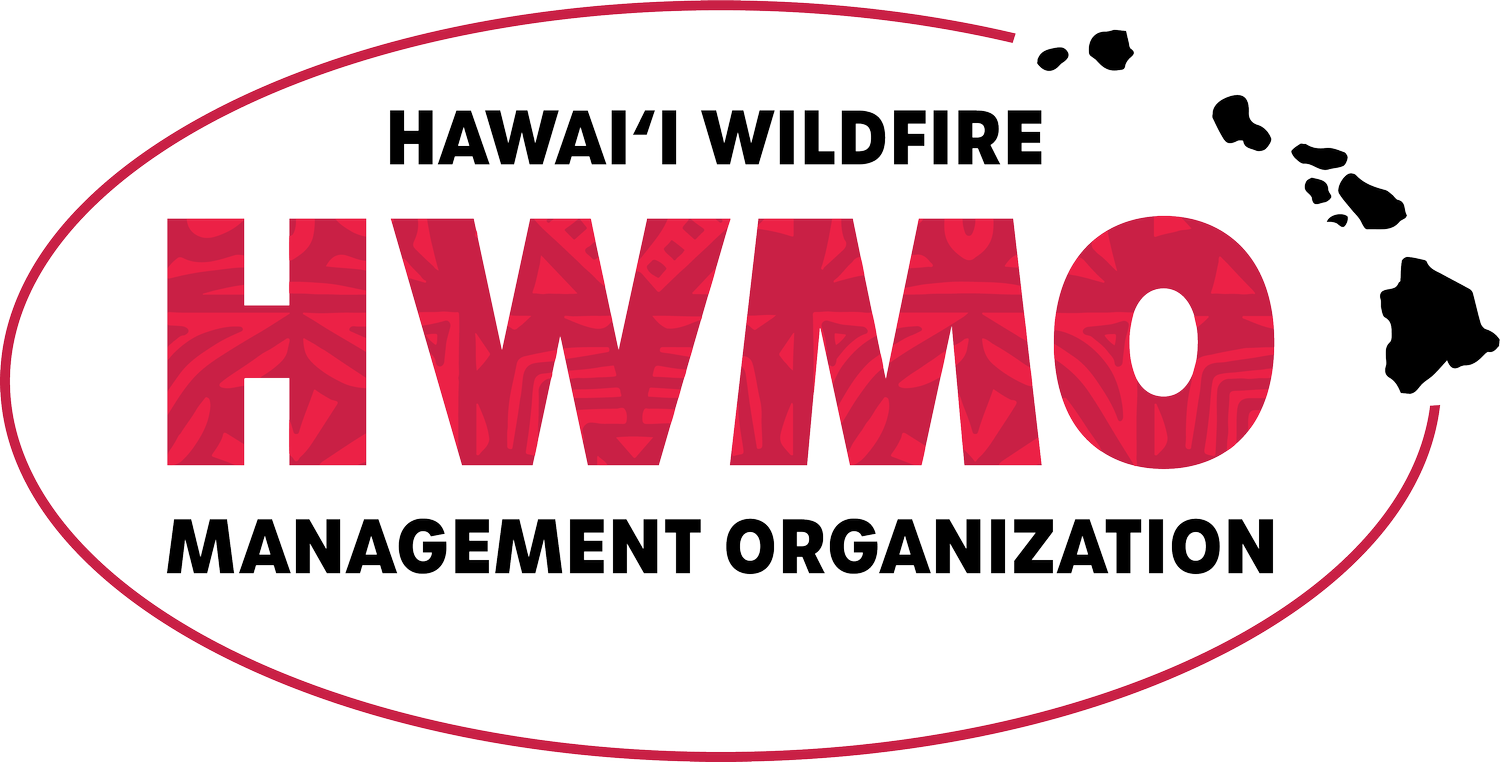Above: Aerial view of Puu Anahulu Wildfire Management Study's 24 test plots.
Puu Anahulu Wildfire Management Study
The 2004 - 2006 Pu’uanahulu Wildfire Management Study, sponsored by the Joint Fire Science Program and conducted by HWMO staff, evaluated the effectiveness of a range and various combinations of fine fuels management techniques including:
- Prescribed burns
- Herbicide applications
- Grazing
Research concluded that:
1) Well managed grazing that includes an objective for reducing fine fuels is an effective and flexible treatment for mitigating wildfire hazards.
2) Prescribed burns and large-scale herbicide applications, while effective at reducing grasses, can render treated areas vulnerable to colonization by additional undesirable invasive species, such as tree tobacco and castor bean.
3) Areas invaded by tree tobacco that can no longer be grazed - therefore a wildfire mitigation option and economic opportunity is lost - require mechanical and herbicide treatments to control future build up fuels.
4) Prescribed burns and herbicide treatments are costly while grazing provides wildfire mitigation and an agricultural and economic benefit.
